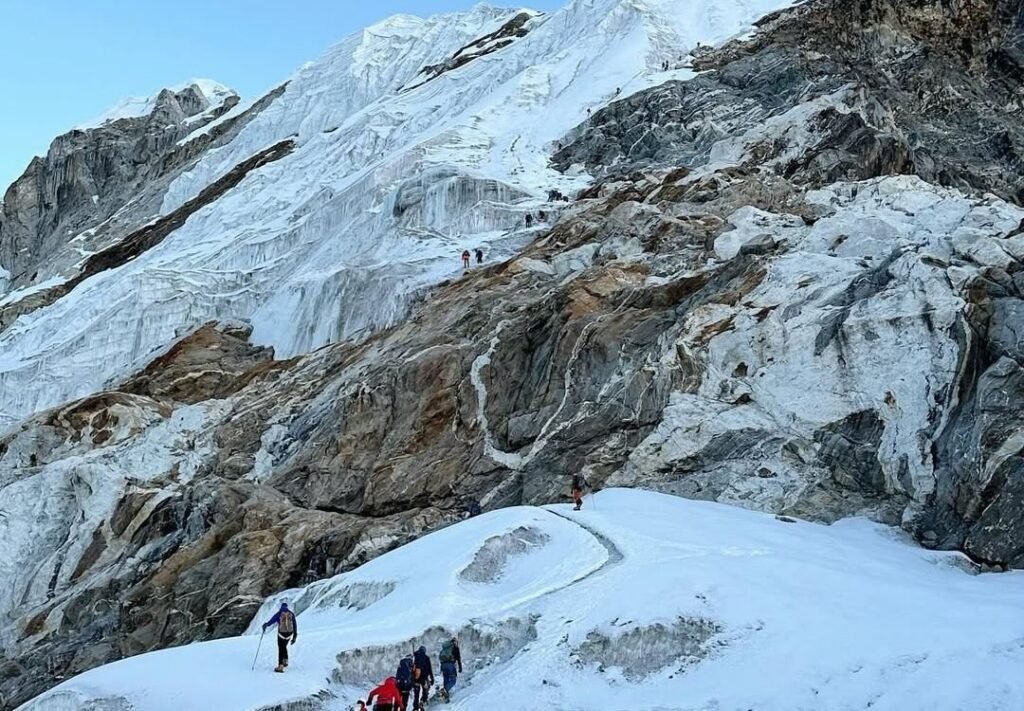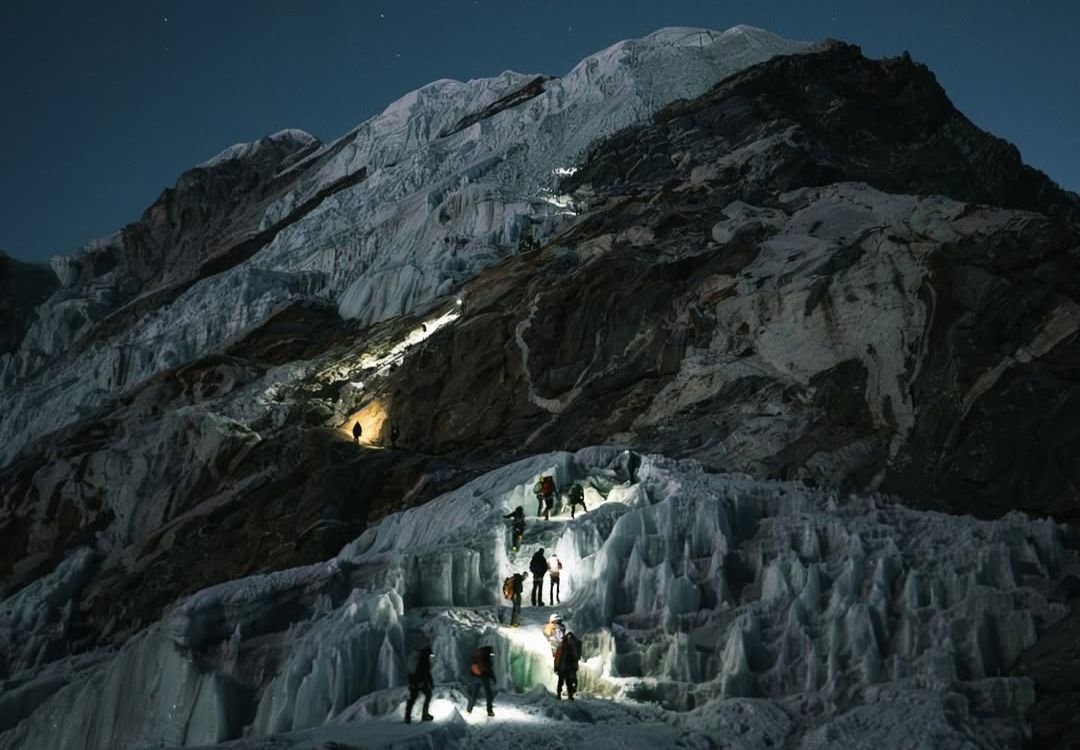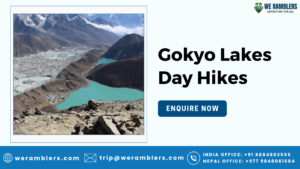Insurance for Lobuche Peak Climb: A Complete Guide for High-Altitude Adventurers
The Lobuche Peak Climb, situated in Nepal’s Khumbu region, is one of the most sought-after 6000 meters plus expeditions in the Himalayas. With Lobuche East standing at 6,119 meters, this trekking peak offers a rare opportunity to combine traditional trekking with moderate technical climbing. The approach follows the classic Everest Base Camp trail, passing through vibrant Sherpa villages like Namche Bazaar and Tengboche before diverging toward the Lobuche Base Camp.
This expedition typically takes around 17 to 21 days, including acclimatization stops and summit attempts. It’s classified as moderately technical, requiring prior experience with crampons, ice axes, and ropework. The final summit push involves traversing steep snowfields and narrow ridgelines, all at altitudes that severely test physical stamina and mental resilience.
Due to the thin air, glaciated terrain, and unpredictable weather above 6000 meters, Lobuche Peak is not a beginner’s trek. Its allure lies not just in the panoramic views of Everest, Lhotse, Ama Dablam, and Pumori, but in the intense personal challenge it presents. With its high-risk profile, having the right insurance for Lobuche Peak climb becomes a non-negotiable necessity, not a luxury.
Why Do You Need Insurance for Lobuche Peak Climb?
Climbing Lobuche Peak is an exhilarating experience, but it carries inherent risks that go far beyond those of typical treks. The terrain, the climate, and the altitude all create conditions where accidents and emergencies are possible, even for experienced climbers. This makes a specialized insurance policy essential, especially one that explicitly includes trekking above 6000 meters.
Most general travel insurance plans exclude high-altitude trekking, mountaineering, or the use of technical climbing equipment. If your insurance does not specify altitude coverage beyond 6000m, it’s unlikely to support you in the event of an emergency. Evacuation, hospitalization, trip interruption, and even gear loss may go uncovered.
Additionally, trekking in the Everest region involves navigating remote areas with minimal access to healthcare or communication infrastructure. Rescue operations are dependent on helicopter evacuations, and without the right policy, those costs are left entirely to the traveler. Choosing a policy suited to Lobuche Peak Trek Insurance ensures that your physical and financial well-being are protected throughout the journey.
High Altitude Risks on Lobuche Peak
Once you ascend past 6000 meters, the physiological stress on your body increases exponentially. The air contains significantly less oxygen, making it difficult to breathe, move, or think clearly. This heightens your vulnerability to Altitude-Related Illnesses, the most common being:
- Acute Mountain Sickness (AMS)
- High Altitude Pulmonary Edema (HAPE)
- High Altitude Cerebral Edema (HACE)
These are not mild discomforts; they can be life-threatening and require immediate descent or evacuation. The symptoms may appear suddenly, even in previously acclimatized climbers. At the altitude of Lobuche Peak, the margin for error is razor-thin, and self-rescue is rarely an option.
Since conventional insurance does not typically cover such elevations, only policies that include trekking insurance over 6000m will fund a helicopter evacuation or emergency medical care. Without this coverage, even a well-organized expedition can turn into a dangerous and costly ordeal. If you’re planning to summit Lobuche, your insurance must specifically account for these high-altitude risks.
Accidents and Injuries on the Lobuche Peak Climb
The Lobuche Peak Climb is more than a strenuous hike; it involves navigating glaciers, snowfields, icy slopes, and crevassed terrain. Climbers face risks from slipping on ice, falling on steep inclines, and sustaining injuries while using technical equipment like harnesses, crampons, and carabiners. Even a minor fall at this elevation can result in serious complications due to slower recovery rates and thinner air.
Moreover, the cold, exhaustion, and isolation amplify the effects of even minor injuries. Without proper coverage, you may find yourself unable to access the rapid rescue or medical treatment necessary for survival. Many general policies exclude any activity categorized as “mountaineering,” especially with the use of ice axes or ropes.
To avoid such gaps, choose a policy that defines mountaineering and 6000m plus trekking as covered activities. Your Lobuche Peak Trek Insurance should also cover physiotherapy, repatriation, and post-trek care in case of fractures, sprains, or altitude-related trauma. Safety isn’t optional when climbing above 6000 meters, and your insurance coverage shouldn’t be either.
Illnesses During the Lobuche Peak Trek
While altitude-related conditions dominate the risk landscape, other illnesses can also disrupt your Lobuche expedition. Common afflictions include:
- Respiratory infections due to dry, cold mountain air
- Gastrointestinal issues from contaminated water or food
- Hypothermia or severe fatigue due to exposure and overexertion
At such extreme elevations, the body’s immune response is compromised, and even mild illnesses can rapidly escalate. There are no permanent medical facilities beyond Namche Bazaar, and any serious health issue will require evacuation by air to Kathmandu.
Your insurance plan must include comprehensive coverage for non-trauma illnesses, including hospital admission, doctor consultations, and medication expenses. Look for policies with zero altitude restrictions, covering both chronic conditions triggered at high altitudes and unexpected infections. A solid travel insurance for Lobuche Peak Climb allows you to focus on the summit; not on survival logistics.

Other Reasons for Having Lobuche Peak Climb Insurance: Flight Disruptions and Baggage Loss
Reaching the Lobuche trailhead often involves a flight into Lukla, which is famous for being one of the most weather-dependent airstrips in the world. Fog, wind, and rain can lead to frequent delays and cancellations, often leaving trekkers stranded in Kathmandu or Lukla for days.
Moreover, any delay or mishandling of checked trekking gear, like sleeping bags, mountaineering boots, or safety harnesses, can compromise the expedition’s success or force expensive last-minute replacements. This is particularly critical when climbing above 6000 meters, where every item, from gloves to goggles, is crucial for survival.
That’s why your Lobuche Peak Trek Insurance should cover:
- Trip interruption and flight cancellation
- Lost or delayed baggage
- Additional accommodation and transport expenses
If your gear doesn’t make it, neither should your financial stability suffer. Insure yourself so you can adapt to itinerary changes and focus on achieving your summit safely.
What Your Trekking Insurance Must Cover
When trekking above 6000 meters, the bare minimum isn’t enough. Your policy must be suited to extreme altitude and alpine terrain, including:
- Helicopter Evacuation
Your insurance must offer full coverage for air evacuations from elevations above 6000m, without altitude limits.
- Medical Expenses and Hospitalization
Include treatment in remote regions and post-evacuation care in urban centers like Kathmandu.
- High-Altitude Coverage
Ensure your plan explicitly states coverage for trekking and mountaineering above 6,000 meters.
- Trip Interruption or Cancellation
Valuable for sudden illness, political unrest, natural disasters, or personal emergencies.
- Baggage Protection
Reimbursement for lost or delayed trekking gear.
- Adventure Activity Inclusion
Your insurance must list climbing, ice travel, and rope use as covered sports.
- Optional Add-ons
Look for clauses that cover COVID-19, communicable diseases, or emergency repatriation.
A generic policy won’t cut it here. Only specialist policies cater to the risks involved in summiting a peak like Lobuche.
Recommended Insurance Providers for Lobuche Peak
Here are top-tier insurance providers that offer reliable coverage for high-altitude trekking and climbing above 6000 meters, including emergency helicopter evacuation, adventure sports, and comprehensive hospitalization:
- World Nomads – Flexible coverage and adventure sport add-ons for guided climbs.
- Global Rescue – Known for real-time evacuation coordination in high-risk environments.
- IMG Global – Offers custom adventure plans covering technical climbs and altitude.
- Allianz Travel – Robust international coverage; check region-specific terms.
- Seven Corners – Includes comprehensive evacuation and optional high-altitude riders.
- Travel Guard (AIG) – Adventure riders can be added for trekking over 6000m.
- Alpenverein (Austrian Alpine Club) – Mountaineers’ favorite; covers rescue and liability, though additional medical coverage may be needed.
- Adventure Care / ASC360 – Designed for high-risk expeditions and sports.
Always confirm that Lobuche Peak Climb is within their coverage scope and that technical equipment and altitudes above 6000m are not excluded.
Typical Insurance Cost for Lobuche Peak Climb
Insurance pricing varies based on your residence, age, duration of trek, and coverage limits. Here’s what typically affects cost:
- Trekking over 6000 meters incurs higher premiums due to increased risk.
- Adventure sports add-ons significantly impact total cost.
- Helicopter evacuation and global repatriation are usually priced as premium features.
- Travel history, age, and health status also affect the base quote.
Expect to pay a premium for altitude coverage, but remember, this is not a cost; it’s a life-saving investment. For high-altitude expeditions like Lobuche and Mera Peak, insurance is part of your gear list, as critical as your ice axe or headlamp.
Tips for Choosing the Right Insurance
When preparing for a high-altitude climb like Lobuche, follow these guidelines to ensure your insurance actually works for you:
- Double-check the altitude limit in the policy; it must clearly include climbs over 6000 meters.
- Look for helicopter evacuation inclusion, especially in Nepal’s mountainous terrain.
- Understand exclusions—especially for technical equipment, solo trekking, or pre-existing conditions.
- Declare any existing health issues upfront to avoid claim denial.
- Purchase your policy before departing, ideally when booking the trek.
- Store digital and physical copies, and share them with your expedition leader or guide service.
Getting the best travel insurance for high altitude trekking is as important as your summit strategy. It’s the safety net you hope to never use, but can’t afford to be without.
Why Choose We Ramblers for Your Lobuche Peak Adventure
At We Ramblers, we understand the gravity of attempting a 6000 meters plus climb like Lobuche. We bring years of experience, safety-first protocols, and local knowledge to every expedition. Our team supports you at every stage, from choosing the right insurance for Lobuche Peak Climb to managing emergency response and rescue coordination.
With certified guides, seamless logistics, and a deep respect for Himalayan conditions, we ensure that your climb is challenging, memorable, and safe. When you choose We Ramblers, you’re not just climbing a peak; you’re gaining a trusted partner who understands every inch of the journey, above and below 6000 meters. Get in touch today for more information.





